In the 1950s, Los Angeles was an up-and-coming city but wasn’t quite there yet. For decades, people had been moving to California for the climate, the jobs, and the cheap real estate. It was a city on the rise but something was still missing.
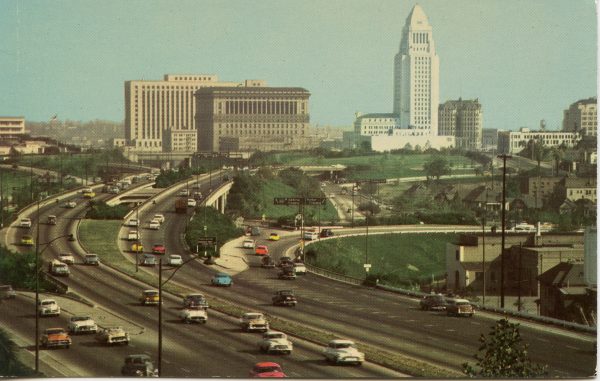

“When Americans were asked to talk about the major cities of the country in the 1950s,” explains Jerald Podair, author of City of Dreams: Dodger Stadium and the Birth of Modern Los Angeles, “they would say New York … Chicago … Boston,” but few thought of L.A. as a big metropolitan player in the game.
Los Angeles didn’t have the rows of towering skyscrapers that made New York and Chicago unmistakable. Overall, Los Angeles felt more like a collection of neighborhoods than a cohesive city, too.
City leaders were looking for a way to boost Los Angeles’s profile as a world city and also give Angelenos something to rally behind. They believed that what L.A. really needed was a baseball team.
Let’s Play Ball!
From its inception, professional baseball in the US was played mostly on the East Coast. As early as 1953, L.A. city leaders began plotting to lure a baseball team out west. As luck would have it, there was an East Coast team in desperate need of a new stadium: the Brooklyn Dodgers.
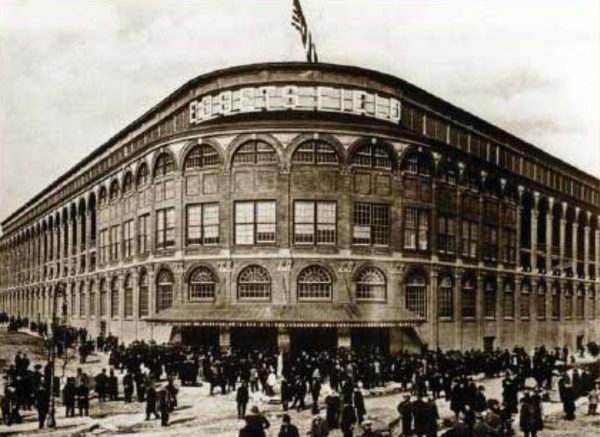
The Dodgers were an established baseball team who had been playing at a ballpark called Ebbets Field, but this stadium had a lot of problems. There were columns obstructing the view of the field, steep climbs to the upper deck and barely any parking or freeway access. Team owner Walter O’Malley wanted to build his own, modern, well-designed stadium and keep the team in Brooklyn. He even went so far as to hire Buckminster Fuller to draft plans for a dome to go over the top of the field that would turn the stadium into an all-weather facility.

O’Malley fought for years for his dream of a privately-owned stadium, but there was one very powerful bureaucrat standing in the way: New York’s infamous “master builder” Robert Moses. Without Moses’s support, a new Dodger Stadium in Brooklyn was basically impossible — O’Malley was a Brooklynite, and figured if the park was going to end up in Queens, it may as well be thousands of miles away.
Welcome to Los Angeles
The L.A. City Council invited O’Malley out to Los Angeles for a visit, and O’Malley decided to take them up on the offer. He hired a helicopter to fly him around the city to scout out the land and he saw something that caught his eye. It looked like an empty piece of hilly land just a few miles from downtown and it was called Chavez Ravine. Mark Langill, the official historian for the L.A. Dodgers and author of Dodger Stadium, says that it was the location’s proximity to freeway access that made it appealing. Grading the earth would be tough, but it would be worth it to have the stadium close to freeways so fans could get there.

If he was willing to bring the Dodgers to Los Angeles, the city council was willing to offer O’Malley a deal in the form of a land swap. O’Malley would trade a different, smaller ballpark called Wrigley Field that he owned in L.A. to the city and, in exchange, the city would transfer the land at Chavez Ravine to O’Malley to build Dodger Stadium on.
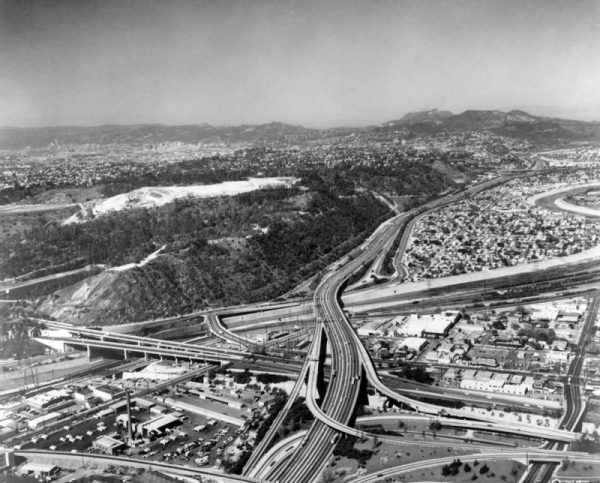
But O’Malley probably didn’t realize that the plot of land he had his eye on wasn’t completely empty. There were a few families living on that land in Chavez Ravine and they’d been there a long time. If the Dodgers were going to build a stadium there, they’d have to kick those people out. This also wouldn’t be the first time that the people of Chavez Ravine had been asked to leave their home.
A Colorful Community

O’Malley thought he saw a vast empty stretch of land from the helicopter, but what he was really seeing were the last bits of a community that had existed there since the early 1900s. For a long time, it was a neighborhood full of life. “It was very colorful … the ladies had colorful birds,” remembers former Chavez Ravine resident, Carol Jacques. “That’s what would wake us up — canaries in the morning, singing. It was just a very colorful community,”

Chavez Ravine was a semi-rural community within the city and it was home to mostly Mexican and Mexican-American families. It was made up of three different neighborhoods called Palo Verde, La Loma, and Bishop. Some roads were paved, but most weren’t. A lot of homes had electricity, but some didn’t. It wouldn’t be technically incorrect to say that Chavez Ravine was a low-income neighborhood, but in its own way, it was a flourishing, closely-knit community.

This community was located just a few miles from downtown Los Angeles but it felt like it was a world apart. It was this isolated pocket within the city with its own schools, churches, stores and a barbershop. The residents had everything they needed without ever having to leave the neighborhood.

But a lot of the reason why they were so independent was that they had to be. In the early 1900s, racial covenants limited where people of color could actually purchase property. From the 1910s throughout the 40s, Chavez Ravine was one of the few places in Los Angeles that non-white people could actually own a home.
The first threat to this residential community came, ironically, in the form of new housing. In 1949, the federal government passed the National Housing Act, which allocated funds to cities all over the country in order to build low-income housing for people in need. Los Angeles itself was going to be home to 10,000 of these new public housing units.

“This was part of an effort to alleviate a severe housing shortage … during the early 1940s during World War II,” says Eric Avila, Professor of History and Chicano Studies at UCLA. “And public housing was seen as a solution to providing affordable, sanitary living conditions for poor people who were not able to provide that for themselves.”

The city selected Chavez Ravine to be the site for 3,600 new units because the City Housing Authority had determined it was a “slum.” The CHA claimed that it was infested with rats, homes lacked electricity and toilets and argued it was actually in everyone’s best interest that the community be outfitted with newer, more modern housing. Most former residents disagree with this characterization. “We had flushing toilets everywhere. We had some lights … and we had a lot of things that would not mark us as slums,” argues Carol Jacques.

However, because Chavez Ravine was officially designated as a slum, the City Housing Authority was able to use eminent domain laws to clear the land for the housing project. Property-owning residents were offered a lowball payment for their homes and almost everyone in Chavez Ravine ended up selling and then moving to different parts of the city. By 1948, the restrictive covenants that prevented families of color from moving into other areas were lifted, and a lot of former residents became the first Mexican and Mexican-American families in these new neighborhoods.

Some residents were told that they would be first in line to move into the new public housing community at Chavez Ravine, but those hopes were short-lived. In 1953, a new Los Angeles mayor named Norris Poulson took office with an ideological objection to the project. Poulson labeled the housing project a “communist threat” and felt that subsidized housing reeked of socialism. He put an end to the low-income housing project, and the residents of Chavez Ravine had been displaced with nowhere to go.
Reaping the Benefits of Displacement
The city ended up buying the land from the Federal Housing Authority and left it undeveloped for years while it figured out how to put the property to public use, which is where the Dodgers came in. Walter O’Malley was convinced that Chavez Ravine was the perfect place to build his perfect stadium. The city council seemed to agree and approved the deal to give the land to the Dodgers.
At the same time, though, a lot of people were opposed to the deal for reasons that had nothing to do with Chavez Ravine. Not everyone in L.A. was excited about the city subsidizing a private business, even if that business was baseball. The opposition was so intense that the city decided to put the deal up for a referendum. This meant that the contract would be placed on a ballot and the citizens would get the chance to vote on the new stadium. In the end, voters came out in the Dodgers’ favor, but just barely. The Dodger contract passed by a narrow margin of about 52% percent out of almost 700,000 votes.
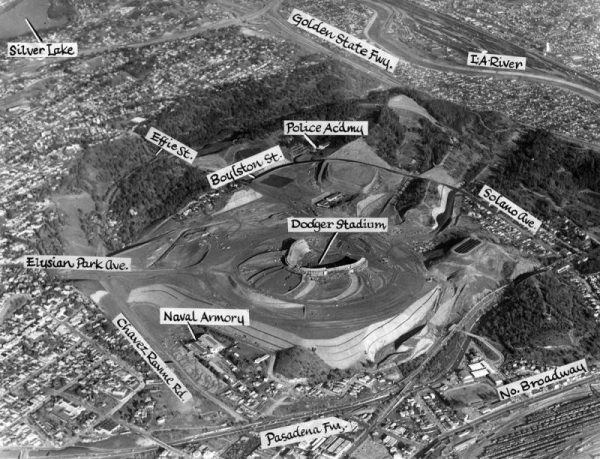
Black Friday
Even with the deal approved, there was still the issue of the few remaining holdouts living in Chavez Ravine. The Federal Housing Authority had tried to clear the land, but a small number of families (around 20) still refused to give up their homes. These people, deemed “squatters” by the city, needed to be evicted in order to start construction.

On May 9th, 1959, Los Angeles sent sheriff’s deputies to Chavez Ravine to remove anyone who had refused to leave. What followed was a horrific scene of a family called the Arechigas being dragged out of their house. Their daughter, a woman named Aurora Vargas, was physically lifted and carried out the doorway of her own home.
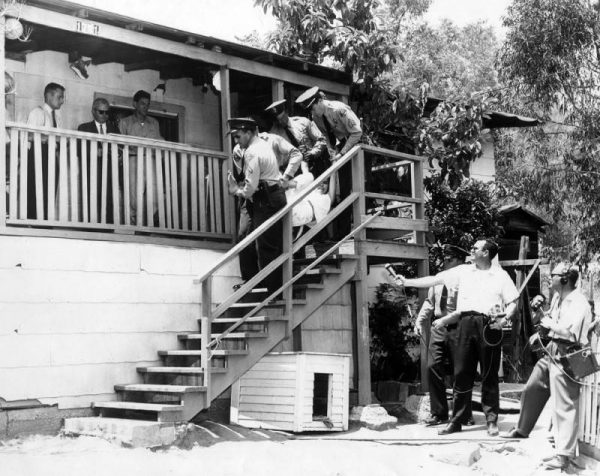
“News reporters with their cameras appeared on the scene to film the eviction of the Arechiga family,” says Eric Avila, and the image of this removal was “indelibly impressed into the living memory of Los Angeles … of a mother and her children being forcefully evicted from their homes … grandmother being carried out in her rocking chair from her home … dogs barking chickens flying everywhere children crying.”

These images were all over the front pages of newspapers at the time. They dredged up memories not just of the failed housing project years earlier, but of an entire history of racial discrimination that Latino and Chicano Americans had been experiencing in Los Angeles for decades. Mexican American history in the United States is full of stories of conquest and land dispossession, and seeing this scene broadcast on television hit a nerve.
What happened at Chavez Ravine will always be part of the team’s legacy, but it wouldn’t be fair to blame all of that pain on the Dodgers. After all, it was the Federal Housing Authority who had displaced a majority of the residents, and it was the city of Los Angeles who had violently evicted the last remaining holdouts. This history is complicated and it’s difficult to sum up all of the forces and events that led to the destruction of Chavez Ravine, but Dodger Stadium will always be, in part, a monument to the displacement of an entire community.

Home of the Dodger Baseball

Today, Dodger Stadium is the third oldest ballpark in American baseball, and you have to admit it’s a beautiful stadium. It’s symmetrical, with elegant lines, amazing views of the city and somehow even a bad seat is still a pretty good seat.

In some ways, the ballpark did what those politicians back in the 1950s wanted it to. The Dodgers are a civic institution, beloved by people throughout the city. These days, the Dodgers are even known for having one of the most diverse fan bases in baseball, thanks in large part to LA’s Latino community.

“I would have to say that L.A.’s Mexican-American community is of two minds on this issue,” says Eric Avila, “And, yes, I think many Mexican Americans see the Chavez Ravine as part of a larger story of discrimination and displacement in Southern California [but] Mexican-Americans are among the Dodgers biggest fans.”
In the 1980s “Fernandomania” inspired by a star pitcher named Fernando Valenzuela brought in huge numbers of Latino fans in Los Angeles, but the Dodgers have tried to strategically appeal to the L.A. Latino community from the very beginning. Spanish language game broadcasts have been available for almost as long as the Dodgers have been in Los Angeles.

Every year on the third Saturday of July, former residents of Chavez Ravine get together for a reunion picnic in Elysian Park. Edward’s father, Louis, started the tradition years ago and named the group “Los Desterrados” meaning “the uprooted.” They spend the afternoon telling stories about the old neighborhood, eating, listening to music and keeping the memory of their community alive.




Comments (6)
Share
Another wonderful program on Dodger stadium with a slight correction. It stated Fernando was the first Cy Young and rookie of the year winner, when I believe, in fact, that recently passed Dodger pitcher Don Newcombe was the first.
Ry Cooper produces an excellent album about Chavez Ravine
Professional baseball played mostly on the East Coast? Really? Ever heard of the Pacific Coast League? The (original) LA Angels and Hollywood Stars? Not to mention, closer to your home, the Oakland Oaks and the San Francisco Seals? Before the teams stolen from Brooklyn and New York, the PCL was in the process of being upgraded to a third major league but O’Malley killed that
And putting up some skyscrapers does not make a city. LA is still Long Island with palm trees. Paraphrasing Shaw, put a roof over LA and you have one big shopping mall.
I feel like this podcast whitewashes O’Malley’s intentions for wanting a new ballpark in Brooklyn. After Jackie Robinson broke the color barrier in 1947, the Dodgers became incredibly popular with black fans. When O’Malley acquired the team in the 1950s, he and Dodger execs were concerned that the many black fans at Ebbets Field were scaring away the “more desirable” white fans. A new ballpark with freeway access and parking was intended to draw in white fans from the suburbs while making access more difficult for urban African Americans.
I was hoping to see some of the political cartoons mentioned in the post script regarding the trolley dodgers. It reminded me of that great cartoon you posted about the automobile God consuming children.
I struck up a conversation with another parent/kid combo on the STL zoo carousel and discovered that they had tickets to the Cards/Dodgers game on Monday. The dad mentioned “Fernandomania” and – thanks to this episode of 99% Invisible – I knew exactly who and what he was talking about. He mentioned his Mexican heritage – he’s from El Paso – and I mentioned my daughter’s Spanish immersion school and we shared a happy few moments being human, together. So, thank you for providing some “human experience glue” (to vandalize a term from the episode) to connect strangers on a zoo carousel. What a gift!